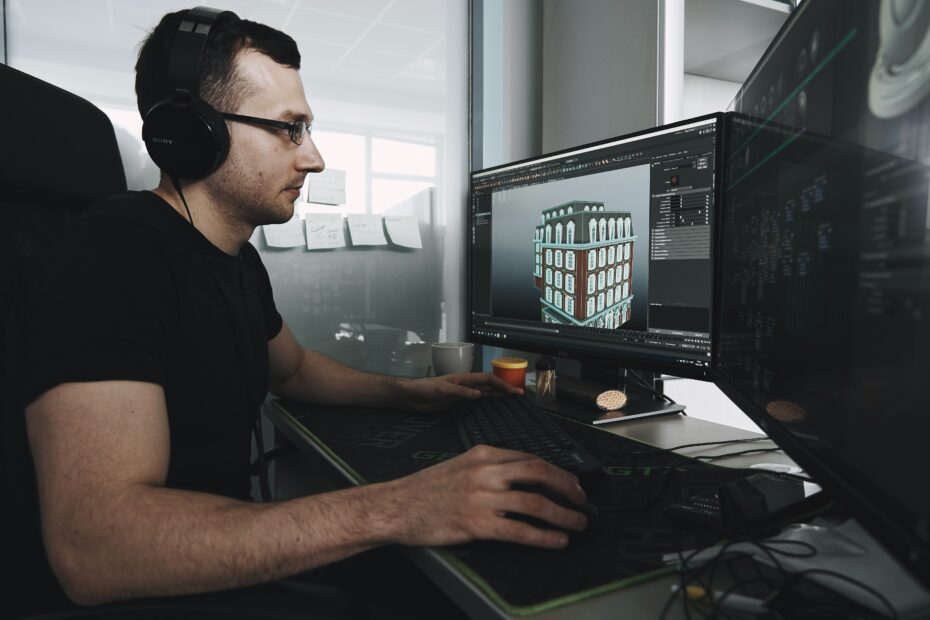If you’ve already got a powerful gaming PC, you might be wondering: can it handle 3D modelling too?
It seems like it should—after all, both tasks are demanding. But as we’ve covered in previous entries, the requirements for modelling and gaming aren’t quite the same. Whether you’re looking to start making your own 3D art or you’re shopping for a new rig, it’s helpful to know what really matters under the hood.
Let’s break down the key differences between a gaming PC and a high-end 3D modelling setup.
3D Modelling: It’s All About the Vertices
Most 3D models go through multiple stages. You might start by sculpting a high-resolution mesh using tools like Blender or Zbrush. These meshes are full of fine details—wrinkles, pores, surface textures—and often contain millions of vertices.
Those vertices need to be stored in RAM. That’s why artists working with high-poly models tend to favour 32GB of memory or more. Even if you’re not sculpting yourself, collaborating with someone who does means you’ll need the horsepower to open and edit large files without crashing.
When it’s time to use those models in a game, things change. You need to reduce the poly count to optimise performance. This is where retopology comes in—a technique where you manually trace over a detailed mesh to create a simpler, more efficient version. If you want to dive deeper into the process, check out this excellent guide on retopology.
Thanks to ultra-fast asset streaming (supported by newer consoles and high-end PCs), there’s a shift happening. But even with modern hardware, it’s smart to plan for both high-poly and game-ready assets.
Real-Time vs Non-Real-Time Rendering
Games use real-time renderers. They generate frames on the fly. If your system can’t keep up, your framerate suffers.
By contrast, 3D artists often use non-real-time renderers. Programs like Blender’s Cycles engine create photorealistic frames by simulating light, shadows, and reflections over time. These renders can take minutes—or even hours—per frame, depending on the complexity and effects used.
That’s why faster render times make such a big difference. They help you iterate quickly, test more, and improve faster. This is where workstation-level performance, like the kind found in NVIDIA Studio systems, can come in handy. These machines are built for creators and offer accelerated rendering with GPU support.
CPU Power: Single-Core Still Matters
You might assume 3D modelling is all about graphics cards—but your CPU does a lot of heavy lifting.
Modifiers are one example. These are rules applied to models to automate tasks—like mirroring, beveling, or subdividing geometry. Modifiers are processed one after another, which means they often rely on single-threaded performance. A CPU with fewer cores but a high clock speed can be better than one with lots of cores and slower speeds.
There are exceptions. If you’re building large interior scenes or environments with multiple models, multi-core CPUs help with handling many tasks at once. But for many modelling tasks, clock speed wins.
Building a Flexible Rig
If you’re new to 3D modelling, you probably haven’t chosen a niche yet. That’s fine—in fact, it’s better to start with a versatile setup that can handle a bit of everything.
A good gaming PC often ticks those boxes. It’s built for high frame rates, strong GPU output, and general multitasking. And that makes it a great starting point for learning Blender, Maya, or 3ds Max.
Over time, as you figure out your interests—like sculpting, animation, or physics—you can tweak your system to suit. You might swap in a faster CPU, add more RAM, or upgrade to a more powerful GPU.
To find a PC that can support both gaming and creative work, check out our range of gaming PCs. Many of them offer exactly the kind of balance that beginner 3D artists need.
Final Thoughts
You don’t need a top-tier workstation to start 3D modelling. If you’ve already got a decent gaming PC, you can definitely get started—and possibly go quite far—with the hardware you have. But as your skills grow, you’ll want to understand where performance matters most.
Focus on memory, CPU speed, and render times. From there, you can customise your setup to match your creative ambitions.
